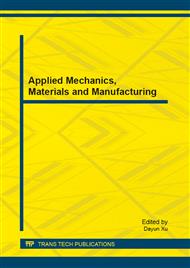p.435
p.440
p.444
p.449
p.455
p.459
p.466
p.472
p.478
The Study of Degaussing Technology for Underwater Vehicle
Abstract:
The underwater vehicle is mainly made of ferromagnetic material, the sensor measured except magnetic field, besides magnetic field that the vehicle of the inherent hard magnetic and soft magnetic materials produce and vehicle magnetic fields produced in mechanical and electrical equipment. At the same time, the precision of the geomagnetic measurements will be affected by sensor manufacturing error and installation error factors. Therefore, how to extract the magnetic field from complex environment is a real time measurement of a difficult problem. In this paper, it is based on soft compensation. The magnetic survey experiment that underwater carrier rotates 360 degrees underwater has been done on this basis, and the effect of underwater carrier on cesium magnetometer in different heading is analyzed. The degaussing algorithm for own magnetic field of carrier is obtained and the real value of underwater magnetic field can be restored. It is the solid foundation of high precision underwater geomagnetic navigation and establishing the underwater geomagnetic map.
Info:
Periodical:
Pages:
455-458
Citation:
Online since:
August 2013
Authors:
Price:
Сopyright:
© 2013 Trans Tech Publications Ltd. All Rights Reserved
Share:
Citation:


